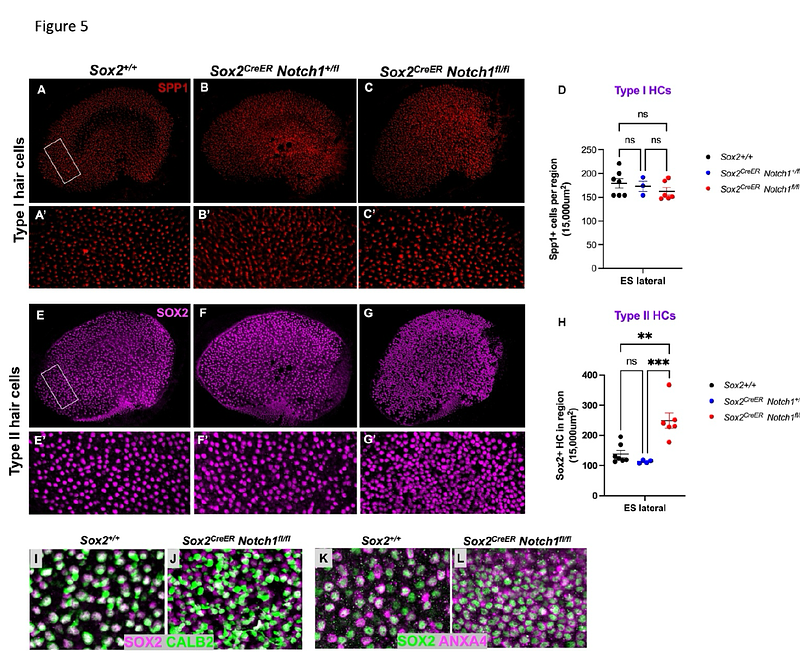Notch1 is required to maintain supporting cell identity and vestibular function during maturation of the mammalian balance organs

Notch1 is required to maintain supporting cell identity and vestibular function during maturation of the mammalian balance organs
Heffer, A.; Lee, C.; Holt, J. C.; Kiernan, A. E.
AbstractThe inner ear houses two sensory modalities: the hearing organ, located in the cochlea, and the balance organs, located throughout the vestibular regions of the ear. Both hearing and vestibular sensory regions are composed of similar cell types, including hair cells and associated supporting cells. Recently, we showed that Notch1 is required for maintaining supporting cell survival postnatally during cochlear maturation. However, it is not known whether Notch1 plays a similar role in the balance organs of the inner ear. To characterize the role of Notch during vestibular maturation, we conditionally deleted Notch1 from Sox2-expressing cells of the vestibular organs in the mouse at P0/P1. Histological analyses showed a dramatic loss of supporting cells accompanied by an increase in type II hair cells without cell death, indicating the supporting cells are converting to hair cells in the maturing vestibular regions. Analysis of 6-week old animals indicate that the converted hair cells survive, despite the reduction of supporting cells. Interestingly, measurements of vestibular sensory evoked potentials (VsEPs), known to be generated in the striolar regions of the vestibular afferents in the maculae, failed to show a response, indicating that NOTCH1 expression is critical for striolar function postnatally. Consistent with this, we find that the specialized type I hair cells in the striola fail to develop the complex calyces typical of these cells. These defects are likely due to the reduction in supporting cells, which have previously been shown to express factors critical for the striolar region. Similar to other mutants that lack proper striolar development, Notch1 mutants do not exhibit typical vestibular behaviors such as circling and head shaking, but do show difficulties in some vestibular tests, including the balance beam and forced swim test. These results indicate that, unlike the hearing organ in which the supporting cells undergo cell death, supporting cells in the balance regions retain the ability to convert to hair cells during maturation, which survive into adulthood despite the reduction in supporting cells.


